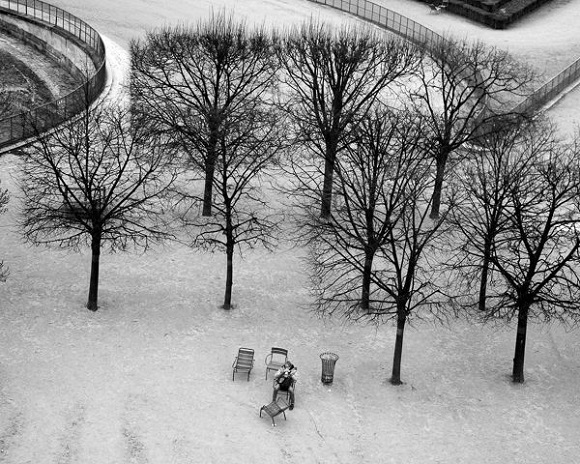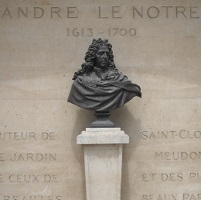
This year France celebrates the 400th anniversary of the birth of André Le Nôtre (1613-1700), the father of French gardens, with events taking place in many of the gardens that he developed or created: Tuileries, Vaux-le-Vicomte, Versailles, Chantilly, Saint-Cloud, Meudon.
France Revisited joins in the celebration with a series of photo reports by Elise Prudhomme, a longtime resident of Paris, beginning with seven stunning black-and-white images of the Tuileries Garden, Paris’s most historical garden.

It was here, behind the royal palace of the Tuileries, that André Le Nôtre cut his teeth as a landscape gardener. His father and grandfather had worked here before him, he lived within the garden walls, and he is buried nearby in Saint Roch Church.
These Tuileries photographs are accompanied by a text in which the photographer provides background about Le Nôtre and explains her photographic interest in this garden.
Le tien, le mien, Le Nôtre / Yours, Mine, Le Nôtre’s
Photographs and text by Elise Prudhomme
A walk through the Tuileries Garden is a return to the origin of French gardens. Considering its long heritage of transformations by queens, kings, landscape architects and gardeners, the Tuileries cannot be fully attributed to André Le Nôtre (1613-1700). It can nevertheless be viewed as the matrix of André Le Nôtre’s career. By matrix I mean that the Tuileries was his testing grounds and the precursor of his future projects, the womb or mold from which his future work originated and developed. Without the Tuileries there would be no Versailles.
Le Nôtre was born near these royal gardens in the Saint Roc Quarter. He was baptized and would eventually be buried in the St. Roch Church. For many years he lived with his family in a house inside the walls of the Tuileries Garden. This garden was a family affair. His grandfather Pierre Le Nôtre was in charge of the parterres for Catherine de Medici, who had built the Tuileries Palace. His father Jean Le Nôtre replanted and maintained the Tuileries for Henri IV. (The Tuileries Palace itself, begun in 1564, burned down in 1871, leaving its garden to appear as though directly connected to the Louvre.)
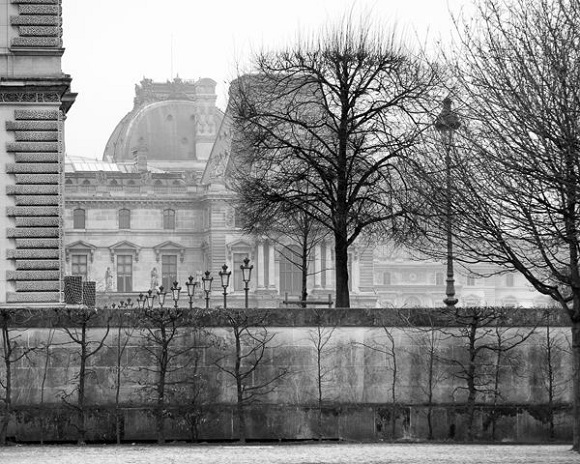
The Tuileries appears to rest on the pillars of its historical central axis running through the garden and out west to what would become the Champs-Elysées and the geometrical work of the basins, but as a photographer these are not the aspects that most interest me here. My eye is drawn instead to the groundmass that constitutes the garden, actually a series of gardens within the larger garden.
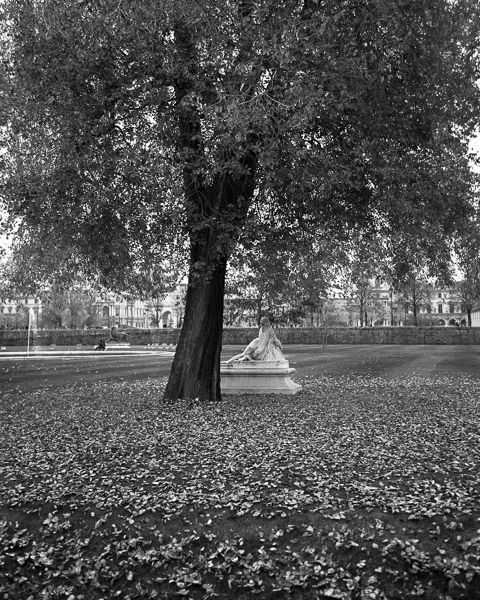
Le Nôtre made innovative and subtle changes to the notion of space, opening what was once a medieval walled garden towards the exterior, creating gardens within gardens (these developed into bosquets at Versailles), changing the form of the parterres (octagonal to trapezoidal) for visual complexity, and constructing the elevated terraces (including the fer à cheval [horseshoe] ramps) which provided the viewer with different heights from which to contemplate the garden.
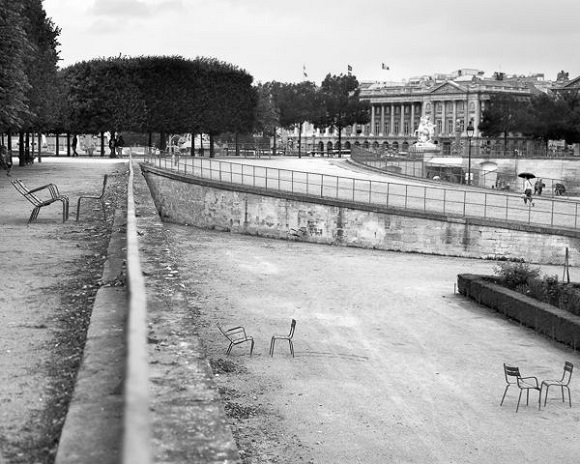
André Le Nôtre sought to break with the early formalism of French gardens in order to render the space appreciable to visitors. Working with mineral and plant architecture, he created multifaceted gardens that are both majestic and playful. The introduction of great vistas allowed him to play with symmetry and geometry in order to create complexity and diversity that open the garden to various functions, to areas of ornamentation (though there were fewer statues at the time), pleasure and utility (though commercial utility was far from Le Nôtre’s intent).
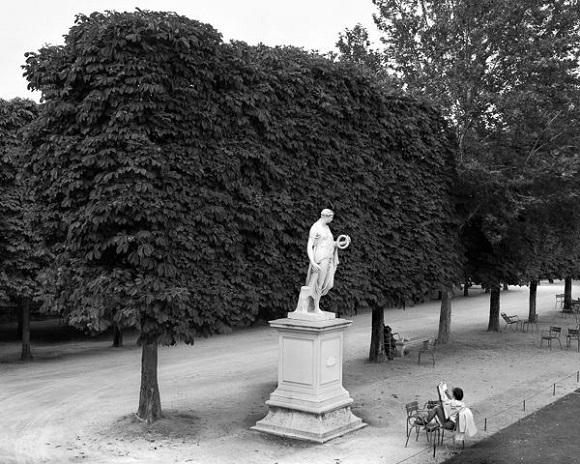
While crowds of pressed visitors are naturally drawn by the dramatic perspective from the Louvre up the Champs-Elysées, the Tuileries also allows strollers the opportunity to discover smaller gardens within the garden.
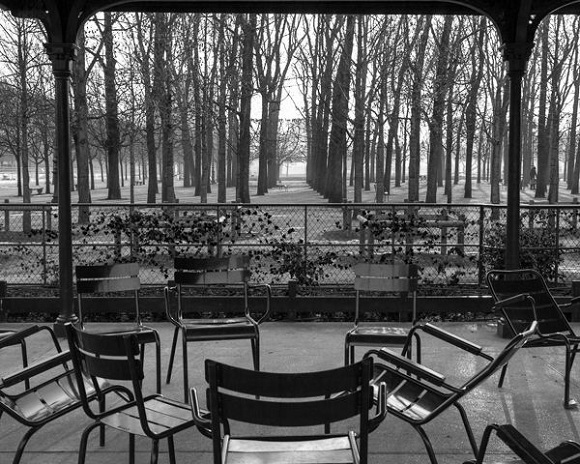
Photographing these individual spaces like the pieces of a puzzle, I wished to form a notion of the whole through the assimilation of individual details. Working spontaneously, I visited the garden frequently and photographed a variety of subjects. The choice to work in black and white was made to better reveal the geometry and rhythm that nature and humans have brought to these places.
Text and images © Elise Prudhomme.
A Philadelphia-born photographer living in Paris since 1990, Elise Prudhomme developed a passion for photography during university years at Smith College. She also directs Studio Galerie B&B, an art gallery, photo studio, darkroom facility and digital imaging center in Paris, 6 bis rue des Récollets, near Canal Saint-Martin in the 10th arrondissement. More images can been seen at www.eliseprudhomme.com.
Thirty photographs from Elise Prudhomme’s Tuileries series Le tien, le mien, Le Nôtre (Yours, Mine, Le Nôtre’s) were accepted by the Louvre to grace the walls of their reception tent in the Tuileries Garden during the 2013 Jardins Jardin festival.


